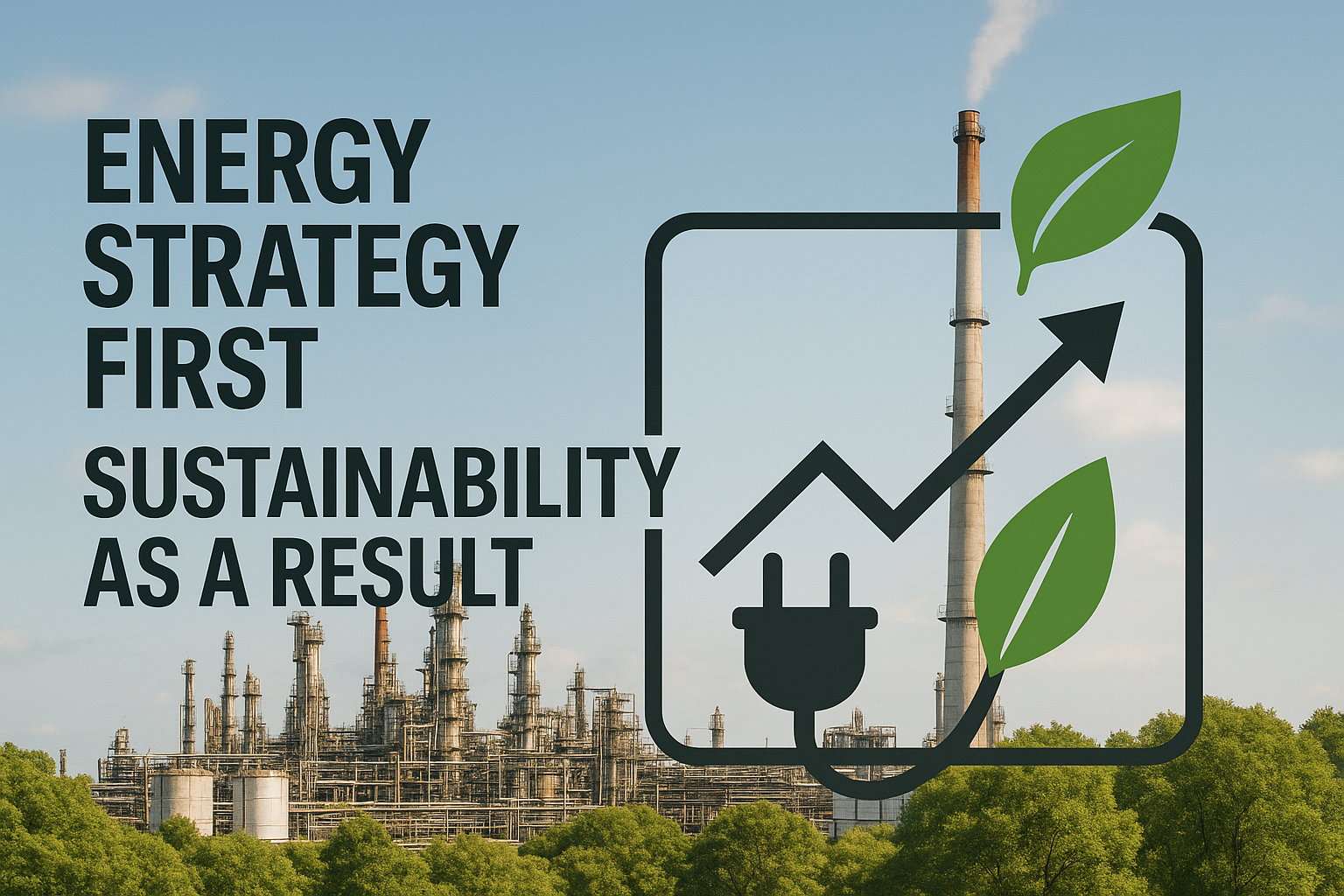Six out of ten process industry leaders say the greatest threat from the retirement wave is the loss of institutional knowledge that keeps units running safely and profitably. The sector faces a looming shortfall of 1.9 million skilled workers by 2033 in the United States alone, a gap the National Association of Manufacturers warns could stall growth and strain front-line operations.
What’s being called “the silver tsunami” leaves you balancing daily production targets against a shrinking pool of seasoned experts.
Automation, especially industrial AI that learns your plant-specific operations, offers a practical path forward. The right tools don’t sideline people; they capture hard-won expertise, ease decision-making, and make roles more engaging for the next generation.
Instead of replacing operators, automation augments their judgment, reduces cognitive load, and frees time for higher-value analysis. Here are eight automation opportunities in process plants that address workforce constraints while creating safer, more efficient operations and attractive career paths for the next generation of talent.
1. Knowledge Capture and Transfer from Retiring Experts
Many process-industry decision makers rank the looming loss of institutional knowledge as their top aging-workforce concern. You feel that pressure daily when a veteran operator hands in retirement paperwork and walks out with decades of furnace-trim intuition stored only in memory. Most of that expertise is tacit, passed along through conversations and handwritten notes rather than reflected in standard operating procedures.
The result is a widening skills gap that stretches the learning curve for new hires and raises the risk of costly missteps. AI changes that equation by mapping existing procedures, recording real-world decisions, and turning them into living digital guides.
By embedding step-by-step instructions inside your existing workflows, these systems capture both explicit instructions and the subtle “if-this/then-that” adjustments experts make under changing conditions. As the system observes more scenarios, AI models begin to predict the moves your retirees once made instinctively.
2. Real-Time Process Decision Making
While knowledge capture preserves veteran expertise, real-time process optimization puts that wisdom to work when it matters most. Faster decision-making ranks as the top AI benefit for industry veterans, and the urgency hits every time your console erupts with alarms you can’t possibly address before the next wave arrives. A single multivariable unit generates hundreds of events per hour, and juggling safety, throughput, and energy costs in that chaos pushes even seasoned operators beyond their limits.
Closed-loop AI optimization steps in by monitoring every tag, reconciling them against economic targets, and then recommending or directly implementing optimized set points to your distributed control system (DCS) in real-time. Unlike traditional advanced process control (APC) solutions, this approach learns from your plant-specific operations, keeping recommendations aligned with changing feed conditions, weather patterns, and equipment constraints. Instead of forcing you to sift through endless dashboards, the system ranks actions by margin impact and surfaces only what drives results.
Real-time analytics catch deviations the instant they appear, reducing material waste and stabilizing quality. The system can even throttle utilities preemptively when demand shifts, translating into measurable cost savings that show up directly on your bottom line.
3. Automated Data Collection & Analysis for Process Improvement
Real-time decision-making depends on high-quality data; however, manual data collection often creates bottlenecks that hinder optimization efforts. Managing large volumes of information and integrating this data with legacy systems poses significant challenges, but the solution lies in automating collection through advanced technologies.
Using sensors and IoT devices, automated systems provide continuous data streams that feed directly into sophisticated analytics platforms. This transition from manual to automated processes not only improves accuracy but also enhances operational responsiveness.
Unified pipelines and technologies for anomaly detection and pattern recognition convert raw information into actionable insights. These insights drive process improvements by identifying inefficiencies and optimization opportunities that may remain hidden in manual reports.
Engineers benefit significantly from these advances, reclaiming hours previously devoted to collection for more valuable analytical work. This shift not only boosts productivity but also enhances job satisfaction as professionals focus on higher-value tasks.
Manufacturers utilizing advanced analytics and AI can experience a 10-15% boost in productivity and an improvement in EBITA by 4-5%. Automated collection supports continuous improvement initiatives, addressing workforce constraints and enabling organizations to adapt quickly to changing requirements.
4. Routine Process Monitoring and Predictive Alerts
Beyond collecting information, automated systems must transform that data into actionable intelligence. Process industry leaders consistently rank “more automation, fewer manual tasks” as a top AI benefit, and the reason becomes clear when you consider what console operators face daily. Streams of alarms, trend charts, and routine checks stretch human attention past its limit. Vigilance fatigue creeps in, deviations slip by, and minor upsets snowball into costly downtime.
Automated monitoring changes this dynamic entirely. AI systems watch every tag and loop around the clock without tiring, flagging threshold breaches the instant they emerge, and forecasting excursions hours in advance. The financial impact is substantial. Plants that introduced continuous monitoring and predictive alerts report a drop in unplanned downtime, eliminating the cascade of costs that follow unexpected shutdowns.
Beyond the financial benefits, predictive alerts address workforce constraints directly. A single operator can confidently oversee more units because the system triages events, surfaces only critical ones, and supplies context-aware recommendations. Fewer urgent pages translate to lower stress, steadier focus, and higher job satisfaction; all while the plant operates closer to its economic ceiling.
5. Cross-Department Information Sharing
Predictive alerts work best when shared across all stakeholders, yet bridging departmental gaps remains critical as isolated information can lead to operational inefficiencies and hinder optimization efforts. Automated information sharing systems ensure that all departments access the same real-time intelligence, eliminating delays and discrepancies often associated with manual dissemination.
Real-time dashboards effectively push critical key performance indicators (KPIs) to all relevant departments, ensuring everyone stays informed and aligned. This capability supports quick corrective actions and speeds up decision-making processes, which are crucial for maintaining operational efficiency. Departments can work from a single source of truth, which facilitates smoother operations and a cohesive organizational culture.
By fostering improved cross-departmental information sharing, businesses can see tangible improvements in operational outcomes. Teams can quickly address potential issues or optimize processes collectively, leading to better performance and efficiency. This automation-driven collaboration not only uplifts workforce satisfaction but also aligns with broader strategic objectives, such as increased productivity and streamlined workflows.
6. Training and Onboarding Support
Effective information sharing sets the stage for better workforce development, and “shorter onboarding time” was one of the most-cited advantages of industrial AI in a recent workforce survey. That priority makes sense: with experienced operators retiring faster than you can replace them, every week a new hire spends in advisory mode with a veteran is a week of lost capacity.
Traditional classroom sessions and manual documentation struggle to convey the nuance of complex, multivariable systems. Automation closes that gap by turning institutional know-how into interactive content. Knowledge-management platforms capture step-by-step procedures as clickable flowcharts and video walk-throughs, putting the right instruction in front of a trainee exactly when they need it.
Digital systems do more than replicate paper; they adapt to each learner. Adaptive micro-learning tools use short assessments to gauge comprehension, then adjust difficulty or reinforce weak spots. Structured frameworks also track proficiency milestones, giving supervisors clear visibility into who is ready for solo console duty and who needs targeted coaching.
AI-powered simulators layer experiential learning on top of static content. They immerse recruits in realistic process upsets without risking equipment, so operators build muscle memory before ever touching the distributed control system (DCS).
The result is a faster path from novice to competent operator, easing the strain of workforce shortages while appealing to digitally native talent who expect interactive, self-paced learning environments.
7. Automated Process Performance Documentation & Reporting
Once new operators are trained, documenting performance becomes the next challenge. Manual logbooks waste valuable time as engineers transcribe readings instead of solving problems. Handwritten notes create gaps, inconsistent terminology, and version-control issues that complicate compliance.
Automating documentation solves these issues efficiently. Platforms that integrate historian tags with collection workflows stream KPIs directly into secure databases, generating shift summaries and management dashboards automatically. Digital pipelines eliminate transcription errors and reclaim engineering hours weekly.
Automated systems provide consistency by timestamping events, standardizing units, and flagging missing values instantly—eliminating last-minute spreadsheet discrepancies before inspections. By freeing technical staff from clerical work, automation redirects energy toward optimization projects that drive profits. Team morale improves when operators see their input reflected on live screens rather than in binders, while reduced paperwork becomes a recruitment advantage for digital-native talent seeking high-value work.
8. Predictive Maintenance Coordination
Comprehensive reporting enables better maintenance planning by addressing equipment failures that disrupt operations daily. Traditional fixed-schedule maintenance is inefficient—parts fail prematurely or healthy equipment is needlessly serviced. Reactive approaches worsen outcomes, increasing downtime and straining budgets.
Predictive maintenance transforms this paradigm. By analyzing real-time sensor data through AI, subtle wear patterns emerge before failures occur. Maintenance becomes precisely timed based on risk thresholds rather than guesswork.
This approach delivers immediate operational benefits. When systems detect early fouling in a heat exchanger, operators receive guidance to optimize throughput while maintenance teams schedule repairs during planned outages—eliminating emergency interventions.
The benefits extend beyond equipment reliability. Maintenance teams focus on high-value tasks instead of routine checks, reducing unexpected breakdowns while improving safety and morale. Technicians shift from crisis management to precision work, creating better learning environments for new hires. With predictive coordination, leaner teams maintain more assets effectively, redirecting resources toward optimization rather than recovery.
Transform Workforce Challenges into Competitive Advantages
Automation turns today’s workforce shortage into a competitive advantage. The eight approaches we’ve covered—from capturing veteran expertise to coordinating predictive maintenance—address the core challenge facing process industry leaders: how to maintain operational excellence when skilled workers are scarce. With the U.S. facing a projected shortage of 1.9 million skilled workers by 2033, these solutions become essential.
Each capability removes friction from front-line operations while protecting institutional knowledge and lifting efficiency. More importantly, they make your plant attractive to digital-native recruits who expect modern tools. This isn’t about choosing between people and technology—automation handles routine work so your team can focus on exception handling, continuous improvement, and creative problem-solving.
Companies that act now don’t just keep production lines running smoothly; they position themselves as the employers and industry leaders of the future. Get a Complimentary Plant AIO Assessment to see how Imubit’s platform captures institutional knowledge, accelerates daily decisions, and equips your workforce with tools they want to use.




